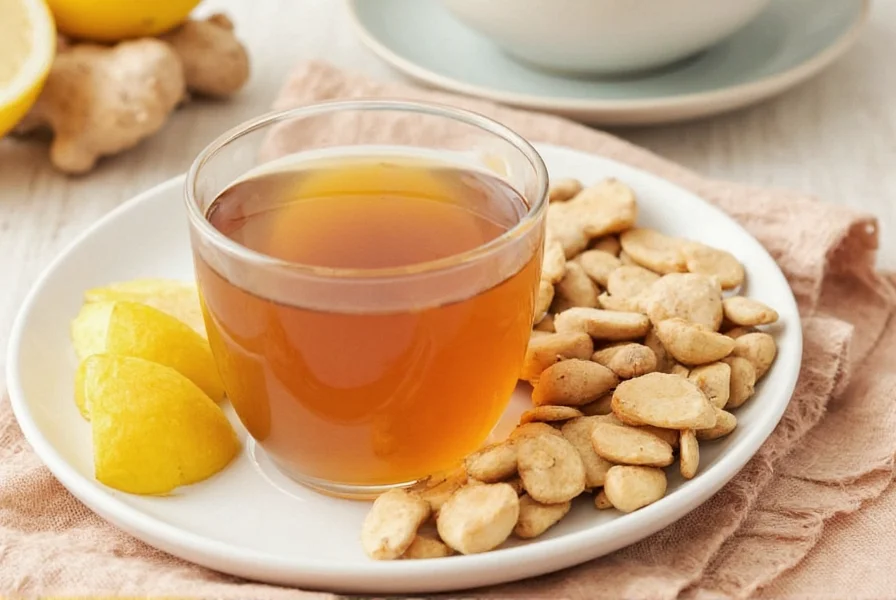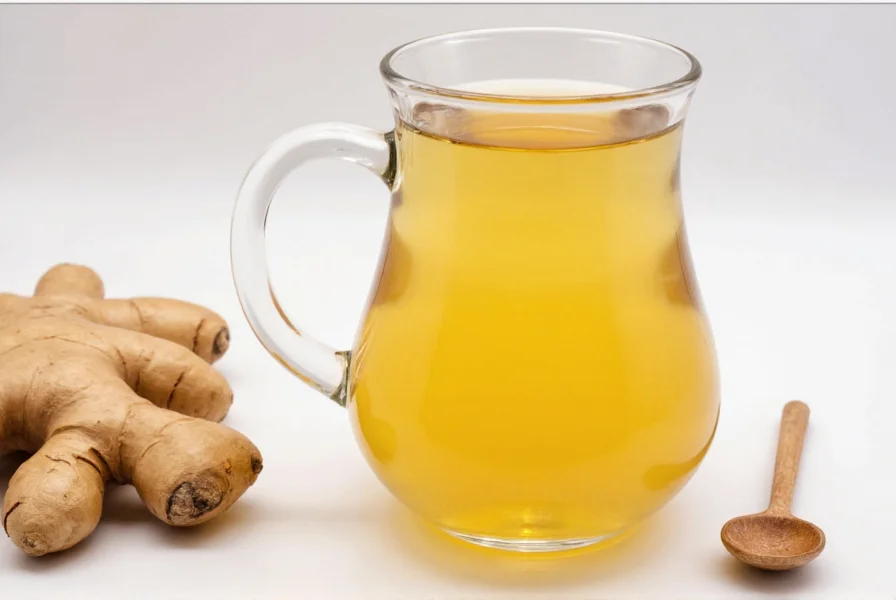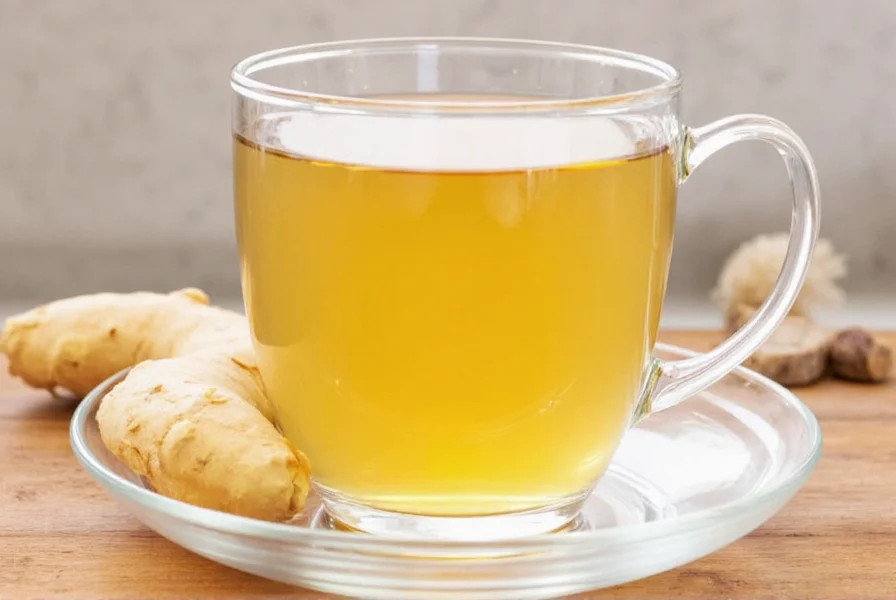Making authentic ginger tea from fresh ginger root is a straightforward process that yields superior flavor and health benefits compared to store-bought alternatives. When you prepare ginger tea from raw ginger, you control the strength, purity, and additional ingredients, creating a beverage perfectly tailored to your taste preferences and wellness needs.
Essential Ingredients and Equipment
Fresh ginger tea requires minimal ingredients but selecting quality components makes a significant difference in your final brew. The ginger root itself should be firm, smooth, and free from wrinkles or soft spots. Younger ginger with thin skin typically has a more delicate flavor, while mature ginger offers a stronger, spicier profile.
For a basic ginger tea recipe, you'll need:
- Fresh ginger root (1-2 inches)
- Filtered water (2 cups)
- Optional additions: lemon slices, raw honey, mint leaves
Basic equipment includes a vegetable peeler, sharp knife, cutting board, medium saucepan with lid, fine mesh strainer, and your favorite teacup. Using non-reactive cookware like stainless steel or enamel prevents flavor alteration during the ginger tea preparation process.
Step-by-Step Ginger Tea Preparation
The key to exceptional homemade ginger tea lies in proper ginger preparation and controlled simmering. Many people make the mistake of boiling ginger too vigorously, which can degrade beneficial compounds while creating an overly harsh flavor.
- Prepare the ginger: Wash the root thoroughly under cool water. Using a spoon (rather than a peeler) gently scrape off the thin skin - this method preserves more of the ginger's flavorful outer layer while removing impurities.
- Slice or grate: For stronger tea, finely grate the ginger. For milder flavor, thinly slice or crush with the side of your knife to release oils without excessive fiber.
- Simmer, don't boil: Add ginger to cold water in your saucepan, then bring to a gentle simmer (not a rolling boil). Simmer covered for 10-15 minutes for standard strength, up to 20 minutes for medicinal-strength tea.
- Strain and serve: Remove from heat, strain into your cup, and add optional ingredients while hot for best flavor integration.
| Ginger Tea Variation | Additional Ingredients | Simmer Time | Best For |
|---|---|---|---|
| Basic Ginger Tea | None | 10-15 minutes | Daily wellness routine |
| Ginger-Lemon Immunity Boost | 1/2 lemon (squeezed), pinch of cayenne | 12-15 minutes | Cold and flu season |
| Soothing Ginger-Honey | 1 tbsp raw honey, mint leaves | 10 minutes | Digestive comfort |
| Spiced Ginger Chai | Cinnamon stick, cardamom pods, black tea | 15-20 minutes | Morning energy boost |
Optimizing Your Ginger Tea Experience
The science behind effective ginger tea preparation reveals that certain techniques maximize both flavor and health benefits. Research shows that ginger's active compound, gingerol, is heat-stable but can degrade with prolonged high-temperature exposure. This explains why gentle simmering produces better results than vigorous boiling.
For digestive benefits, consume your ginger tea 20-30 minutes before meals. The optimal ginger-to-water ratio for general wellness is 1 inch of ginger per 2 cups of water, though you can adjust based on your tolerance and desired strength. Adding a small amount of fat (like a teaspoon of coconut oil) can enhance absorption of ginger's fat-soluble compounds.
When making ginger tea for nausea relief, shorter steeping times (8-10 minutes) with freshly grated ginger provide the most immediate benefits. For anti-inflammatory effects, longer simmering (15-20 minutes) extracts more compounds that support this benefit.

Troubleshooting Common Ginger Tea Issues
Even simple recipes can present challenges. If your ginger tea tastes too weak, increase either the amount of ginger or simmering time. For overly spicy tea, dilute with additional hot water or add more honey/lemon to balance the flavor profile.
Ginger tea that appears cloudy typically results from using grated ginger rather than sliced - this is normal and doesn't affect quality. If your tea develops an unpleasant bitter note, you've likely over-boiled the ginger; future batches should use lower heat and shorter simmering times.
Proper storage extends your ginger tea's shelf life. Keep prepared tea in a sealed glass container in the refrigerator for up to 3 days. Reheat gently without boiling to preserve beneficial compounds. You can also freeze ginger tea in ice cube trays for convenient future use in smoothies or quick tea preparations.
Health Considerations and Benefits
Regular consumption of properly prepared ginger tea offers numerous science-supported benefits. Clinical studies indicate ginger can help reduce nausea, support digestion, and provide anti-inflammatory effects. The preparation method significantly impacts these benefits - fresh ginger tea contains higher concentrations of active compounds than dried ginger alternatives.
While generally safe, certain individuals should moderate consumption. Those taking blood thinners should consult their healthcare provider before consuming large amounts of ginger tea regularly. Pregnant women can safely enjoy moderate amounts (1-2 cups daily) for morning sickness relief, but should avoid excessive consumption.

Advanced Ginger Tea Techniques
For tea enthusiasts seeking to elevate their ginger tea experience, consider these professional techniques. Cold-brewing ginger creates a smoother, less spicy tea by slowly extracting compounds without heat degradation. Simply slice ginger, add to cold water, and refrigerate for 8-12 hours.
Another method involves creating a ginger tea concentrate by simmering larger amounts of ginger in less water, then diluting to taste. This concentrate can be stored in the refrigerator for quick tea preparation throughout the week. For maximum nutrient retention, some traditional practices recommend peeling ginger with a spoon rather than a knife to preserve the nutrient-rich layer just beneath the skin.
Frequently Asked Questions
How much ginger should I use for one cup of tea?
For a single cup of tea, use approximately 1/2 inch of fresh ginger root. This provides a balanced flavor that's neither too weak nor overpowering. Adjust based on your personal preference and the ginger's maturity - younger ginger requires slightly more, while mature ginger needs less due to its stronger flavor profile.
Can I reuse ginger after making tea?
Yes, you can reuse ginger for a second, milder batch of tea. The first brew extracts about 60-70% of the active compounds, leaving enough for a lighter second infusion. Simply return the used ginger to fresh water and simmer for 5-7 minutes. After the second use, the ginger can be composted or used in cooking where texture matters less.
What's the best time of day to drink ginger tea?
Ginger tea can be enjoyed at any time, but timing affects its benefits. For digestive support, drink 20-30 minutes before meals. For morning energy without caffeine, enjoy it upon waking. Those using it for nausea relief should drink it when symptoms appear. Avoid consuming strong ginger tea close to bedtime as its stimulating properties might interfere with sleep for some individuals.
How long does fresh ginger stay good for tea making?
Properly stored fresh ginger root remains suitable for tea making for 2-3 weeks in the refrigerator. Keep it in the vegetable drawer, either wrapped in a paper towel inside a plastic bag or submerged in sherry vinegar (which also enhances flavor). For longer storage, freeze whole ginger root and grate it frozen when needed - frozen ginger actually yields more juice and flavor when prepared for tea.











 浙公网安备
33010002000092号
浙公网安备
33010002000092号 浙B2-20120091-4
浙B2-20120091-4